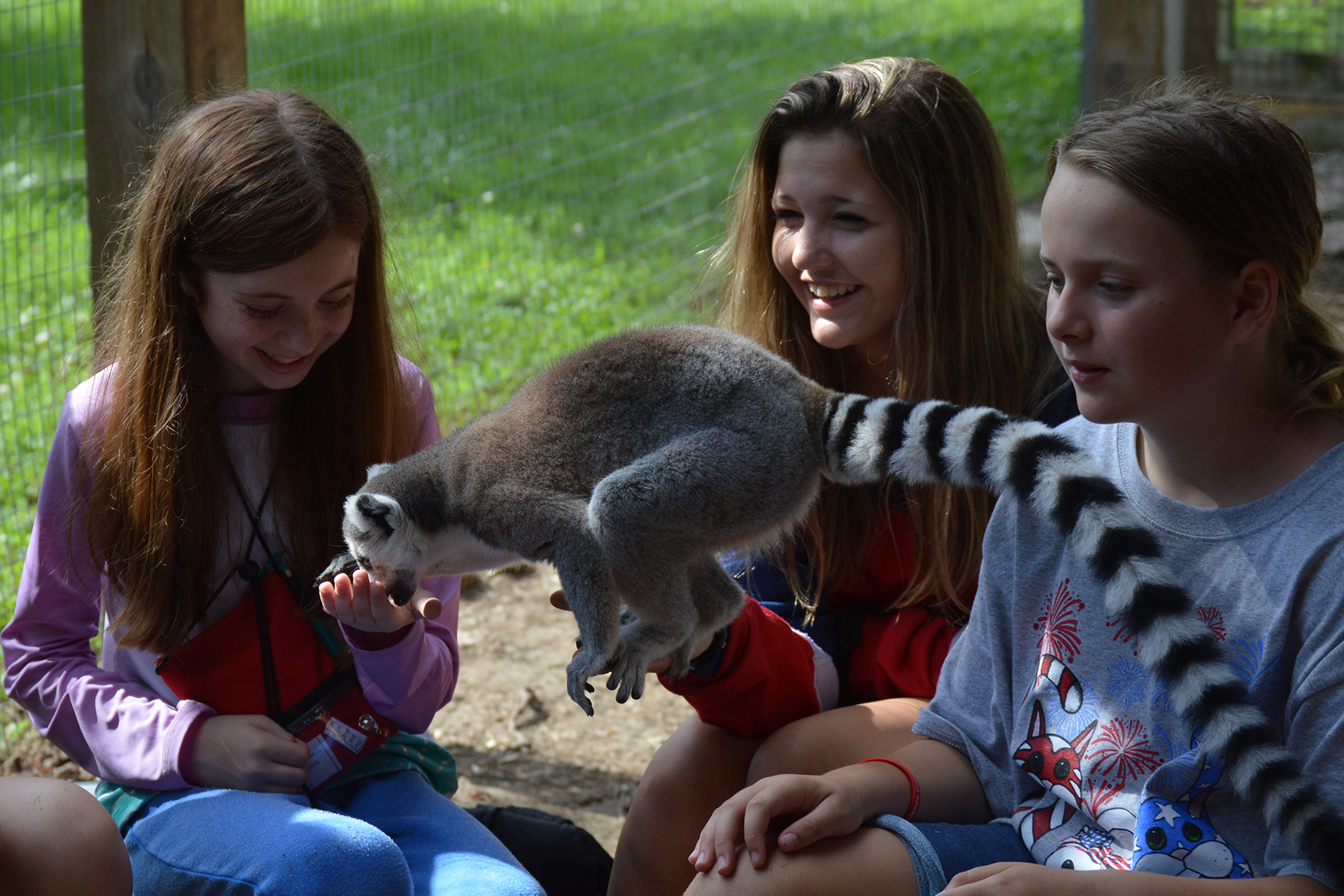Ring-tailed Lemur
Lemur catta
The ring-tailed lemur is one of the most recognized lemur due to its long, black and white ringed tail. It belongs to the family Lemuridao, one of five lemur families and is the only member of the Lemur genus. Like all lemurs it is endemic to the island of Madagascar, where it inhabits forests and shrubland in the southern region. They are terrestrial animals, they spend much of their time up in the trees but will also come to the ground. Ring-tailed lemurs are omnivorous eating mainly fruit, leaves, and insects. They are considered diurnal, being active during the daylight hours and sleeping in the evening.
The ring-tailed lemur is a highly social animal, living in groups of up to 30 lemurs! These groups are a matriarchy, where there is a dominant female lemur. When they rest they will all huddle together to keep warm, this also reaffirms social bonds. Lemurs are equipped with special adaptations to help with foraging for food and mating. They have a keen sense of smell and will mark its territory with scent glands. Males perform a unique scent marking behavior called spur marking. Lemurs are very vocal primates, they use numerous vocalizations for group cohesion and alarm calls. Experiments have shown that ring-tailed lemurs can organize sequences, understand basic arithmetic, and use tools based on functional qualities.

Ring-tailed Lemurs live off the coast of South Africa on the island of Madagascar.
HABITAT -They live in the trees of forested areas and shrublands of Madagascar.
DIET -They are omnivorous eating mainly fruit, leaves, vegetables, and insects.
FUN FACT -The ring-tailed lemurs tail is longer than its body!
SOCIAL BEHAVIOR -They are very social animals living in matriarchal groups of up to 30 lemurs!
ACTIVITY -They are diurnal, meaning they are active during the day and sleep in the evening.
PREDATORS -Predators of the ring-tailed lemur include civets, snakes, cats, dogs and humans.
SIZE -The average length not including the tail is 1 to 1.5 feet, weighing about 5 pounds.
RELATIVES -Relatives include the Golden Bamboo lemur, Grey Gentle lemur and many others
CONSERVATION -Ring-tailed lemurs are considered Endangered on the IUCN Red List.
Cub Creek Animal Care Information
Housing - Our ring-tailed lemurs live in colonies all over camp! Most notably lemur island, and lemur landing are two large enclosures that house our lemurs. Lemur island was built first in the animal area, this large outdoor enclosure has trees all throughout to support their arboreal lifestyle. There are also tire swings, rope swings, fire hoses, and so much more that they love to play on. Lemur landing was built within our new dining hall. It is a large temperature controlled enclosure with trees everywhere. There's also a waterfall in Lemur Landing!
Diet - We feed our lemurs a specialized diet consisting of fruits, vegetables, dry food, and greens. They especially love to eat bananas, apples, and sweet potatoes. This is supplemented with other foods such as monkey biscuits and other dried fruits.
Enrichment - Our lemurs get plenty of socialization from campers during the summer. They will create structures for them to play on out of cardboard that hang from the trees. Living in a multi species enclosure also helps to promote socialization. We also have special toys to keep their minds stimulated through food motivation. These toys will test their intelligence with special puzzles they unlock to get treats!


